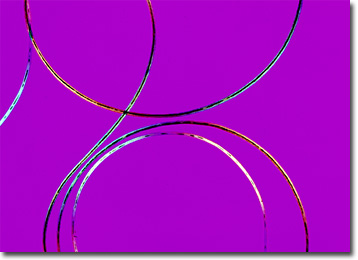Polarized Light Microscopy Digital Image Gallery
Llama Hair
Though they are members of the family Camelidae, llamas do not exhibit the characteristic humps commonly associated with camels. Instead, these South American natives appear more physically similar to the guanaco, alpaca, and vicuña, which are long-legged animals with lean bodies and elongated ears that are jointly referred to as lamoids.

View a second image of Llama Hair
Llamas have been domesticated since the early days of Incan civilization and no longer appear in the wild. The animals are useful to humans in a variety of ways, but are primarily utilized as pack animals in the Andes Mountains. Llamas are well equipped for such a role due to their typically gentle nature, stamina, tolerance for high altitudes, diminutive need for water, and diverse diet. When they are overburdened or mistreated, however, llamas stubbornly refuse to budge and may kick, hiss, and spit. In addition to use as a transport animal, llamas are sometimes raised as a source of meat, milk, hides, and wool.
The coat of a llama is comprised of two different types of hair: guard hairs and ground hairs. Llama guard hairs tend to grow faster and coarser than the ground hairs of the animal’s undercoat. Thus, these fibers generally protect the finer, crimped underlying layer. Both types of llama hair can be exploited for human use. The guard hairs are utilized locally, for instance to construct ropes and to weave rugs, while the softer hair of the undercoat is often used alone or in blends for sweaters and other knitwear. Llama fiber is also sometimes felted to create high quality llama felt cowboy hats, an item particularly popular in Texas.
